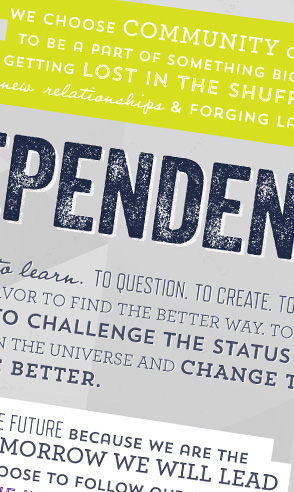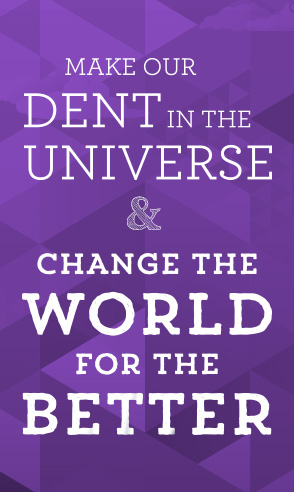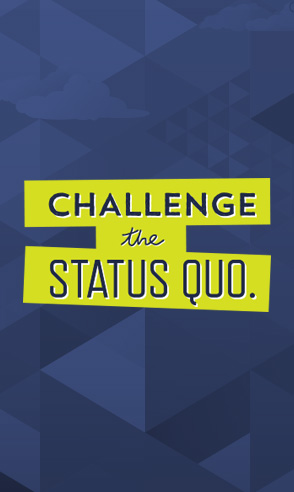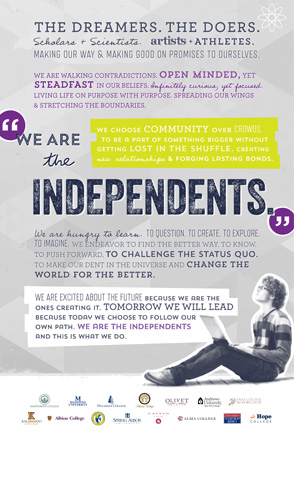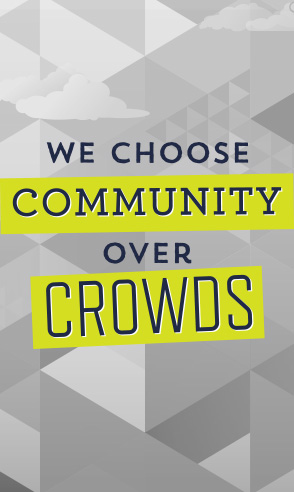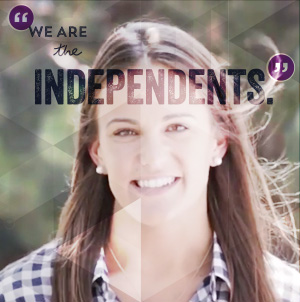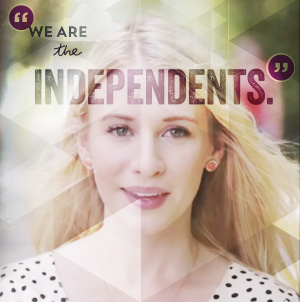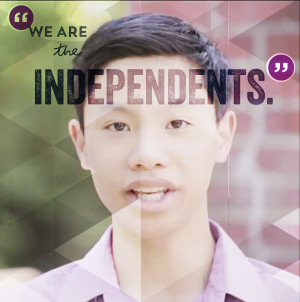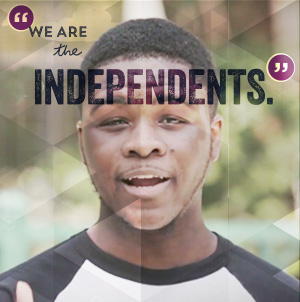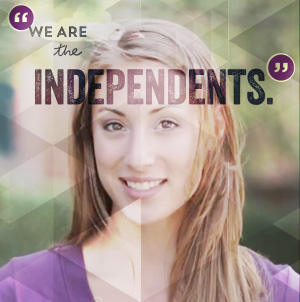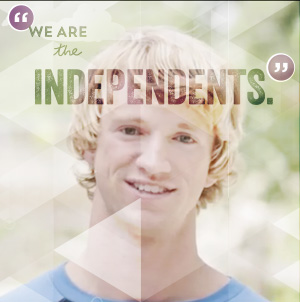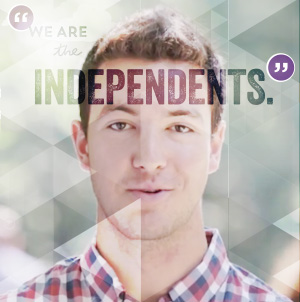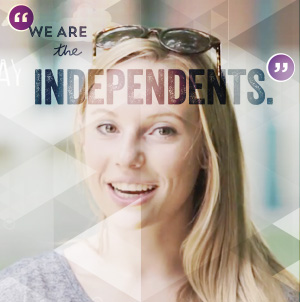Archive for
What to Bring—and Not Bring—to Campus
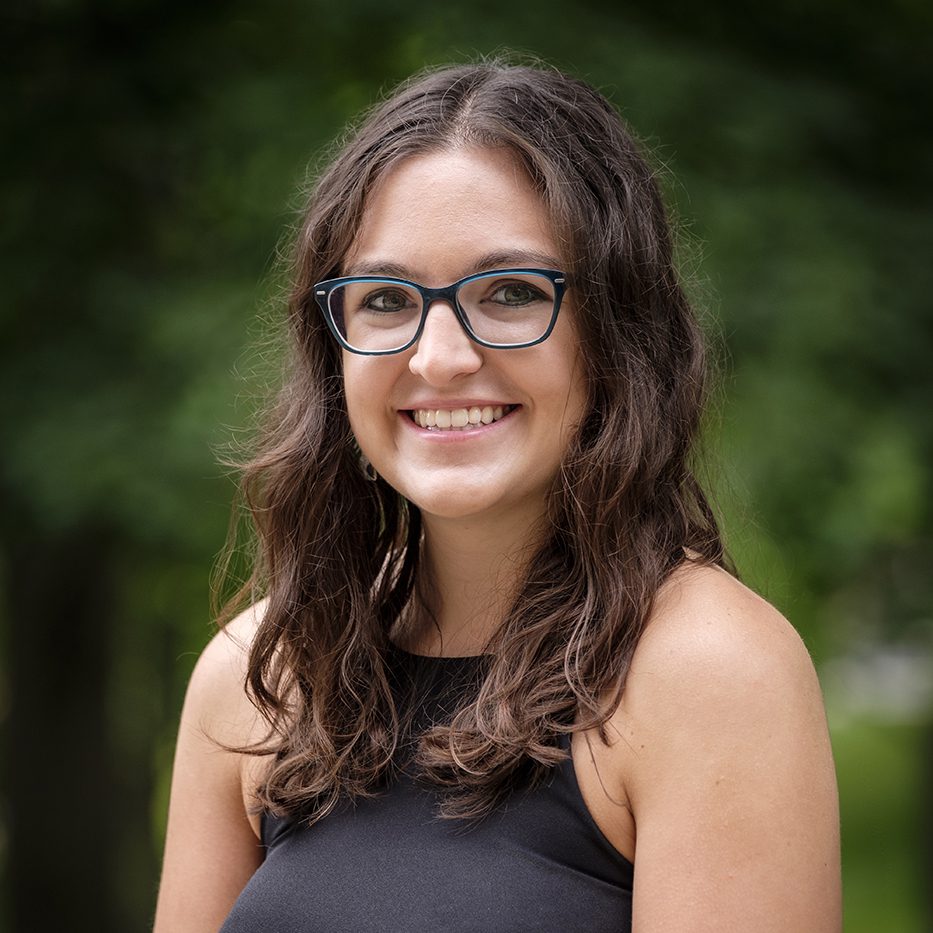
Originally posted at https://www.kzoo.edu/news/what-to-bring-to-campus-2021/
Written by Andy Brown.
Incoming Kalamazoo College students have several great sources for information on what to bring to campus this fall including Residential Living’s online guidance and advice from recent alumni such as Lezlie Lull ’20.
Lull, an admission counselor at K, lived on campus for two years including one as a resident assistant in Crissey Hall. Now, she has conversations with prospective students that include her advice for residence hall life.
“Some students come in very worried about having never shared a room before,” Lull said. “I make sure that they’re aware of knowing how we match roommates and their ability to contact a roommate in advance.”
After easing those concerns, and given her first-hand experience, Lull suggests considering what not to bring, communicating early and often with roommates, and including a few personal items that can make your room feel more like home and smooth your transition on move-in day, September 8.
What not to bring
Lull said what not to bring to campus is just as important as what to bring. Residential Living has a list of prohibited items. Plus, the idea that less is more can save space in close quarters.
“More often than not, I had too much in my room my first year,” she said. “I often thought, ‘Why do I have all of this?’”
A convenience item such as a microwave might seem like a good idea, she said, yet each hall lounge has one that’s immediately available, so it might not be a critical item. Rethink bringing anything that might just take up space or anything you can buy later in Kalamazoo. Residential Life doesn’t keep floor-plan measurements for specific rooms. However, students may look at pictures of residence hall rooms in K’s virtual tour to estimate their potential floor space and where space might be tight.
The one exception to the less-is-more idea might be cold-weather clothing.
“One thing for some—for out-of-state students especially—would be the importance of bringing sweaters and winter coats,” Lull said. “When the first cold weather comes in October, many are stuck with only a pair of jeans and flip flops.”
Communication is key
Even someone who is shy will benefit from reaching out to their assigned roommate before arriving on campus. K students living on campus this fall should already have received their room assignment with their roommate’s name and kzoo.edu email address. Sometimes the benefit is ensuring you don’t bring more than one of the same item. Other times, it helps set agreements between roommates as they get to know each other’s personal routines.
“My first roommate and I weren’t the best of friends, but we got along in the necessary areas,” Lull said. “I think the issues we had were all a lack of communication, whether that was in the moving process or later on. I think it’s a lot easier if you can talk to them in advance, so you don’t show up with two coffeemakers, two refrigerators or multiple items of everything in the room.”
Home sweet home
When packing, think about bringing a couple personal items you can set up out of the way to help your space feel a little more like home.
“A lot of our decorations were things we could sit on our desk or put on the walls with sticky tape,” Lull said. “I also had window stickers we could put up. Other than that, we didn’t necessarily have a ton of stuff. I had string lights to hang pictures from home. My mom made me a pillow that had a picture of me and my dog on it. We also got rugs for the tile floor.”
The week ahead
After you’re settled, the adventure of orientation begins. A schedule for orientation is available at the first-year experience website, and Lull suggests participating as much as possible.
“I think orientation is a really good time to meet a lot of people,” she said. “Some people don’t take advantage of that. Some think, ‘Well, I’m really tired at 8 a.m. They’re not going to know if I don’t show up.’ But how many people are you not meeting because you weren’t there? I think students should be open minded and ready to meet and do everything. Buy coffee if you need to wake up, dress in layers if it’s cool in the morning, and take a water bottle with you in case it gets hot.”
It also helps that Michigan’s top 14 independent colleges and universities set themselves apart from bigger public institutions by encouraging students to forge success by following their own path. The colleges are smaller and emphasize community over crowds. Often less expensive than public institutions, the independents boast higher four-year graduation rates and smaller class sizes for a truly unique and affordable experience.
Be bold. Be different. Go independent.
Virtual Kitchen Serves Recipes and Connects Students
Originally posted at http://www.kzoo.edu/news/virtual-kitchen/
Written by Andy Brown.
A cooking show served with a dash of Kalamazoo College is available to students this term. If you’ve ever wanted student-suitable ideas for easy-to-make, inexpensive, palate-pleasing meals that offer a change of pace and a variety of flavors, make sure to tune in.
Every Thursday, from 6 to 7 p.m., MacKenzy Maddock ’22 leads K’s Virtual Kitchen via Microsoft Teams through the Office of Student Activities (OSA). In each show, at least one student staff member cooks meals while talking with other K students.
“I make a new meal every week and try to pick affordable ingredients as well as try to include options that are vegan and vegetarian friendly,” Maddock said. “My goal is to include as many students as possible and consider their financial capacity, accessibility to resources, and interests in food. Students that participate have the option to get a cooking kit provided by the school which includes utensils used in the kitchen.”
Masoor dal, a spicy Indian red lentil soup, was a recent featured recipe prepared by Alaq Zghayer ’21, and students can expect such diverse dishes in future editions of the Virtual Kitchen.
“I’m working on diversifying the event to be more inclusive to other cultures, religions and groups of people on campus as well as to just learn about other kinds of food,” Maddock said. “I’m doing this by collaborating with the many student organizations we have on campus, and I’m excited for what the next few weeks are going to be like. I think the event is constantly developing and I would love for more participants every week.”
The event’s evening time slot makes it accessible to students across the country. Recordings make it available to students around the world. Students can register for each Virtual Kitchen by emailing k18mm01@kzoo.edu or messaging Maddock on Teams to receive access to the cooking channel, which includes previous editions to the show as well.
“I would like to think that this event is an easy way to socialize while doing something that you need to have to survive, food,” Maddock said. “I also think cooking is a huge thing that brings people together and I think that is something that is really necessary right now.”
Maddock, a double major in chemistry and psychology and a volleyball player, understands the need to unplug from a busy schedule. “I am trying to make this space a safe place to decompress after a long day of work, school, sports, etcetera, and I think that that is really worth it to the students that participate.”
Community. It’s what sets apart Kalamazoo College and Michigan’s other top 15 private colleges and universities.
They’re not merely in towns and cities. They are an integral part of their fabric, reaching beyond campus walls and greens to improve the lives of those around them.
It’s one of many differences with traditional universities.
Unlike big state schools, class sizes are small and taught by incredible faculty who help students forge their own path.
They have a deep and committed network of alumni who help after graduation. It’s an experience that simply isn’t available at traditional universities.
And despite what you may have heard, independents are often less expensive and boast higher four-year graduation rates than four-year institutions.
Be bold. Be different. Go independent.
Make Your College Campus Visits, Virtually
While in-person admissions visits at Michigan’s top 14 private colleges and universities have been canceled due to the coronavirus pandemic, prospective students can still explore these beautiful campuses with the click of a button!
With virtual tours available, you can still get the chance to “walk” the campus, see and feel what life could be like for the next four years. The online tours not only give you a peak into each campus, but many schools even allow you to schedule an online information session with a live admissions counselor! Get your questions answered and make an informed choice now from the comfort of your home.
Get more information in the links below:
Alma College Virtual Tour | Schedule a Virtual Visit
Andrews University Virtual Tour | Sign up for a Virtual Preview
Aquinas College Virtual Tour | Schedule a Virtual Personal Visit
Calvin University Virtual Tour | Schedule a Virtual Visit
Hillsdale College Schedule a Virtual Visit
Hope College Virtual Tour | Schedule a Virtual Visit
Kalamazoo College Virtual Tour | Schedule a Virtual Visit
Madonna University Campus Tour Video | Schedule a Virtual Visit
Siena Heights University Virtual Tour
Spring Arbor University Virtual Tour | Schedule a Virtual Visit
University of Detroit Mercy Virtual Tour | Sign up for a Virtual Information Session
When is the best time to visit colleges?
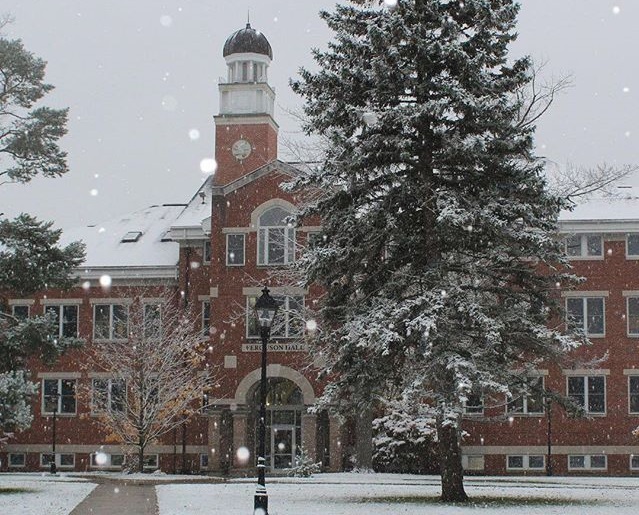
(Albion College, voted 12th Most Beautiful College in Winter)
It’s winter, and the tundra is setting in – at least it is here in Michigan. The last thing you are thinking about is planning a trip to visit campuses. Those long walks across snow-covered quads are certainly less appealing when the temperatures are teetering at the same level as the number of layers you’ll be wearing to stay warm. Or maybe you are a freshman or sophomore, and it’s just “not time yet.”
So, “When is the best time to visit?” The answer may not be what you expect. Here are some tips for getting the most out of campus visits:
Time of year:
As summer strolls in and the school year winds down, families across the country are gearing with plans to visit college campuses. Tours are crowded, staff is minimal, and quads are relatively barren. Although the summer months are more convenient for your time, ideally you should try to plan your visits when classes are in session and the campuses are full of life. Think of it like trying on a pair of new shoes: do you get the proper assessment while sitting? No, you get up, walk around, and perhaps jog in them… as it should also be done visiting campuses. Simulate the day-to-day as if you are attending the school. It doesn’t necessarily mean go in the dead of winter, but consider this: it may be cold, but it’ll also be cold while you attend, won’t it?
Age of student:
It can be very rewarding to visit colleges and universities before your junior and senior year (read: before it’s decision time). You are less concerned about choosing and “buying” when you are simply “window shopping” and more interested in checking out the inventory. Expose yourself to as many different kinds of places—big schools, small schools, research universities, liberal arts colleges, urban campuses, places way out in the country—to develop a broad perspective of all the different options. Then, when it is time to make a decision, you’ll have a better foundation on which to choose.
Before stepping foot on the first campus (and each one after that…):
Your new mantra: Relax, enjoy, decide later. Resist the impulse to judge immediately, good or bad. Your first reaction is bound to be emotional, and usually overly positive—college is really cool! Sleep on it. Weigh your impressions against the other schools you visit and try to remain as objective as possible so your rose-colored glasses don’t allow you to overlook things.
How to choose:
As you visit the campuses, allow your senses to guide you. Really like something? Take note of it. Feel like something’s missing? Take note of it. Gut instinct is usually pretty accurate. Additionally, the perceptions from your visits will come in handy when completing your college applications. Remember this: tying personal experience to the campus environment will blow the minds of the admissions department!
What to look for:
Focus on fit. We perform at our best when we have a level of comfort, belonging, and value. Questions to ask yourself: How does the college meet my academic needs? Will I be challenged appropriately? Is the style of instruction a good match for how I learn? Does the college offer a community that makes me feel “at home?” Does the college offer extracurricular activities that interest me?
After the visit, before you leave:
Connect with the recruiter. Colleges and universities typically assign admissions personnel to different areas of the country for recruiting efficiency. If your area’s recruiter is available, definitely introduce yourself. Either way, get that person’s contact information. Consider him/her as your “go to” person when you have important questions later in the admissions process. And remember this: there is nothing insignificant nor too embarrassing to ask. The admissions staff is there to help!
What to do next:
Record your visit. Make notes as soon as you are able. The more campuses you visit, the more they will begin to blend together, especially from memory. Take pictures to give yourself a visual index of what you’ve seen to avoid confusion later.
And finally:
Enjoy the process. It can be easy to get lost in the excitement and have that energy turn into anxiety. Relax. Start the search early. Visit during the school year to witness the campus’s true environment. Trust your senses and take notes.
As you map your college visit road trip, include a few of Michigan’s top 14 private colleges and universities on your list. These schools are purposefully smaller and emphasize “community over crowds.” Often comparable in cost to Michigan’s public institutions, the independents boast higher four-year graduation rates, outstanding faculty who help students forge their own paths, and smaller class sizes for a truly unique and personal experience.
Be bold. Be different. Go independent.
Michigan Colleges Alliance Awards $32,500 as Part of Independent InnovatorsNetwork Scholarship
Michigan Colleges Alliance (MCA), an organization made up of 14 independent colleges and universities across Michigan, has recently awarded $32,500 in scholarships to six recipients through its Independent InnovatorsNetwork. Recipients consisted of students from Hillsdale College, Aquinas College, Kalamazoo College, Spring Arbor University, and Albion College.
The Independent Innovators Network awards scholarships based on the strength of student applications outlining a business or social entrepreneurship concept. The program first received funding from the Council of Independent Colleges, ranking first among some 20 states competing for grant support in a national RFP.
The Independent Innovators Network, with national and statewide support, is quickly becoming a leading MCA initiative, positioning private, liberal arts students and graduates at the forefront of entrepreneurship and economic development in Michigan. Substantial funding for the program comes from The Jandernoa Foundation, Ford Motor Company Fund, Armstrong International, and Enterprise.
This is the third round of the scholarship competition. Any student attending one of the 14 member colleges and universities of Michigan Colleges Alliance can apply. The most recent competition received 25 applicants across 11 schools, and a total of six winners were awarded a scholarship for their innovative ideas. Scholarships awarded ranged from $2,500 to $7,500. Scholarships through the Independent Innovative Network vary and are given based on multiple factors. Funding, the number of submissions and quality of submissions affect the number of recipients and the amounts given. A steering committee of business leaders ultimately decides how the scholarships are awarded.
Recipients of the award were not the only ones who received an award. Faculty who sponsored winning students also received a $500 stipend for helping mentor and encourage students.
Michigan Colleges Alliance represents 14 independent colleges and universities throughout Michigan, and works to develop collective initiatives that produce positive student outcomes.
As part of its We Are The Independent’s collective promotional campaign, MCA launched the Independent Innovators Network to encourage students at its 14 member colleges and universities to be independent and to follow their own path. The program gives students at smaller schools the unique opportunity to create a culture of entrepreneurship within Michigan higher education, and to stimulate a flow of new product and business ideas in Michigan. The program supports MCA’s overall goal to align the preparation of its graduates with the future skills, qualities, and experiences needed for Michigan’s continued economic progress and success.
“The Independent Innovators Scholarship competition is one of many ways MCA cultivates college educated talent for our state and nation,” says MCA President Dr. Robert Bartlett. “Collectively, our members represent Michigan’s “third largest university,” with more than 41,000 students. This program gives students in all majors the opportunity to think, collaborate, and explore their futures as entrepreneurs.”
All entries are reviewed by MCA board members, scholarship donors, and representatives from partner entrepreneurial organizations across the state. This year’s review panel included representatives from Steelcase, Ford Motor Company, PVS Chemicals, ASG Renaissance, as well as MCA faculty.
The program plans to host the next round of the scholarship competition in fall 2018
Kalamazoo College Student is a Star at Rocket Contests
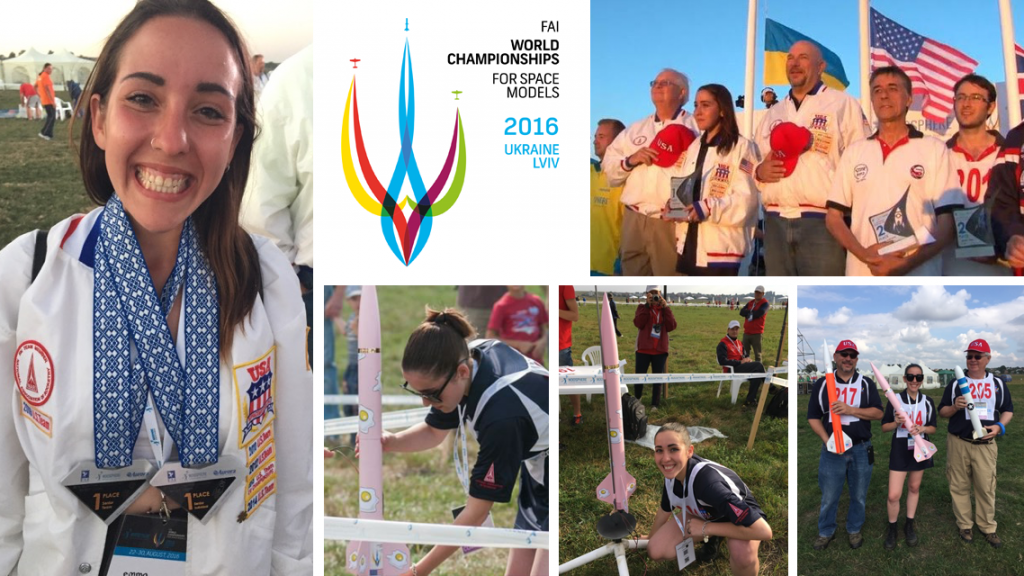
By day, Emma Kristal majors in psychology and biology at Kalamazoo College.
By night, she’s a Rocket Queen.
Her super-power: Making awesome, high-powered rockets that consistently blow away the competition at national and international competitions.
Kristal’s most recent triumph was winning individual and team gold medals with the USA World Space Modeling team in the Space Modeling Championships in Lviv, Ukraine. Her hobby has taken her to Serbia, Slovakia, Bulgaria, Austria and other countries.
“Most of the competitions are in Eastern Europe because that’s where most of the competitors are from other than the U.K. and China,” said the junior from Royal Oak, Michigan.
“We’re the fiercest competitors on the field, but afterward, we can still sit down and play cards together. I’m making connections with people from all over the world. Sometimes I can scroll through my newsfeed (on Facebook) and not see a single thing in English.”
She holds 10 records. One of her rockets is on display at the Smithsonian Air and Space Museum. And she’s recognized as one of the best in an event called the S2P Precision Fragile Payload, in which participants launch rockets 300 meters in 60 seconds without cracking an egg inside them.
Not too shabby for someone who attends a school that’s known as a liberal arts college and doesn’t have a rocketry program. Nor does Kristal plan to make a career out of rocketry.
That’s a testament to Kalamazoo College and Michigan’s 15 independent colleges and universities. All provide world-class educations. And all help students forge their own paths — even if it ventures into space.
“My dad is an emergency room doctor and when we asked his colleagues where I should attend college, they all said K. Honestly, we thought (Kalamazoo College) put something in the water to make them all rave about it,” she told the school.
The independents pride themselves on attracting different students. Ones unafraid of trying new things, venturing outside comfort zones and finding passions that don’t necessarily show up on transcripts.
Purposefully different than big state schools, the independents emphasize community over crowds. Classes are taught by award-winning faculty rather than TAs, allowing students to forge tight bonds with professors.
And despite what you may have heard, independents are often less expensive and boast higher four-year graduation rates that big universities.
Be bold. Be different. Go independent.
Kalamazoo Promise Makes Private Education Within Reach
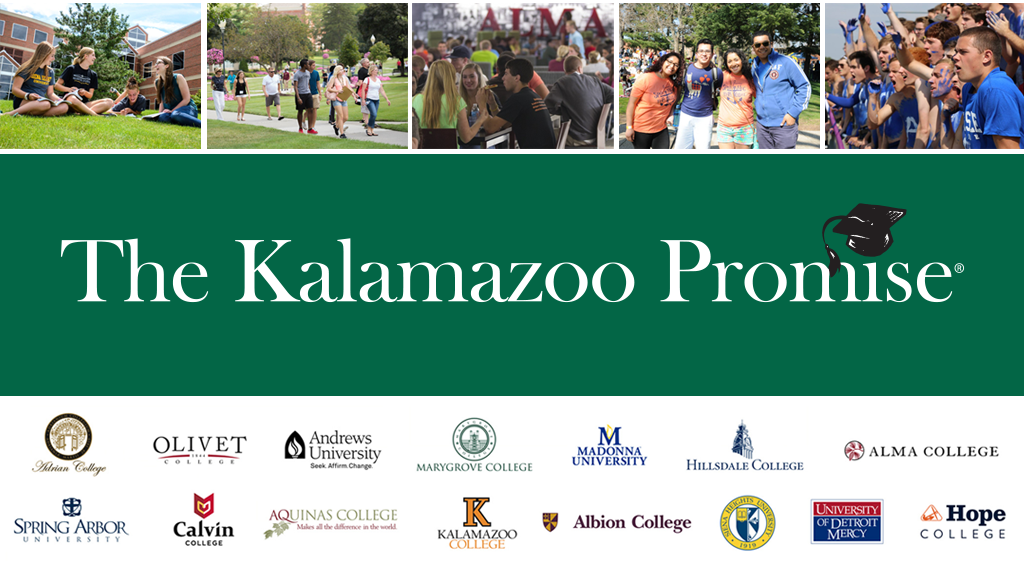
Almost everyone nowadays can cite scary statistics when it comes to the cost of college education.
Nationwide, the average annual tuition at private schools has more than tripled in 30 years jumping to $32,405 this year, according to inflation-adjusted statistics from the College Board.
But the cost of an elite private school education is nothing for students in Kalamazoo public schools.
You read that right.
The cost of Michigan’s 15 independent colleges and universities is zero for students who graduated from Kalamazoo Public Schools and attended since kindergarten. Graduates who attended since at least seventh grade will receive 75 percent of their tuition.
The Kalamazoo Promise is a revolutionary program that is changing lives and putting college in reach for 5,000 eligible graduates since it was launched and funded by anonymous donors in 2005.
The schools now send 85 percent of students to college, whose graduates can expect to earn $1 million more over their lifetime than peers whose education stopped at high school.
And what an education they can get, especially at Michigan’s independents: Adrian College, Albion College, Alma College, Aquinas College, Calvin College, Hillsdale College, Hope College, Kalamazoo College, Marygrove College, Olivet College, the University of Detroit Mercy, Andrews University, Madonna University, Siena Heights University and Spring Arbor University.
The schools pride themselves on helping students forge their own path. Classes are taught by professors, not teaching assistants, with average class sizes of just 17.5 students.
The independents open doors to a host of careers, from business and engineering to education and nursing, supported by a nurturing network of alumni who have become leaders in their fields.
And the independent colleges look like the world around them. One in 4 students at Michigan private colleges and universities is African American, American Indian, Asian, Hispanic or Latino.
Be bold. Be different. Go independent.
Kalamazoo College Professor a Pulitzer Prize Finalist
Take a glimpse of Diane Seuss’ biography, and it’s no wonder she’s a favorite at Kalamazoo College.
The poetry professor describes herself as the spawn of “old school barbers, small town musicians, telephone operators and … one-eyed pool players.”
Her best advice? Learn to cook, be alone, fix a toilet with a paper clip and write poetry because “you may be living in an abandoned potato chip delivery van somewhere in South Dakota without a friend in the world, and maybe even your dog ran away, but you’ll always have the sestina.”
Now, her unique talent and vision is receiving international acclaim, being named one of two finalists this week for the 2016 Pulitzer Prize for Poetry.
It’s a huge honor for Seuss, since the Pulitzer is the something of the equivalent of the Oscars or Grammys for the written word. It’s the latest in a series of awards for Seuss, who has taught at Kalamazoo since 1988 and is its writer in residence.
The Pulitzer committee praised her book, “Four-Legged Girl” as “a richly improvisational poetry collection that leads readers through a gallery of incisive and beguiling portraits and landscapes.”
At Kalamazoo, students praise Seuss as a muse, calling her classes a freewheeling experience that opens them to new possibilities and ways of thinking about the world.
Her secret? Seuss is passionate about what she does and her love is contagious.
“For me, life is writing,” Seuss said in 2010, at the Fetzer Writer’s Retreat.
Seuss is also something of a rarity in academia: A world-renowned expert who still teaches introduction-level classes as well as advanced ones. At most bigger schools, 100-level classes often are handled by graduate students.
That’s not the case at Kalamazoo and Michigan’s top 15 private colleges and universities.
Professors take pride in working closely with students. Class sizes are far smaller than average. That allows professors to forge lifetime bonds with students and help them forge their own paths, buck conventional wisdom and find a new way.
It’s an experience that simply isn’t available at traditional universities. And despite what you may have heard, independents are often less expensive and boast higher four-year graduation rates than four-year institutions.
Be bold. Be different. Go independent.
Michigan Private Colleges Rank High in Social Mobility
Study after study has shown that college not only transforms minds, but it lives as well as wallets.
College graduates make 25 percent more per week than the national average, and unemployment rates are significantly lower the more education is attained, according to the Bureau of Labor Statistics.
In short, college is “a ticket to the middle class,” according to Bridge Magazine.
But getting admitted to one and finishing are two different things, and it’s no secret that some colleges do far better jobs of helping low-income students graduate and get jobs.
The online magazine analyzed federal data to rank colleges on how they promote social mobility — offering tuition breaks, mentors and other aid for low-income students, as well as how long it took them to narrow the income gap with rich students after graduation.
The results? Michigan’s small, private colleges ranked the near the top.
Adrian College was the top-ranked private college in the state, enrolling the seventh-highest percentage of low-income students and graduating nearly 60 percent of them.
Madonna University was not far behind, offering low tuition for low-income students (less than $9,000) and helping them make similar salaries with high-income students 10 years after enrollment.
Olivet College and Spring Arbor University were near the tops in enrolling poor students, while Alma College, Hope College and Calvin College ranked in the top six in graduation rates.
Kalamazoo College, inexplicably, was left out of Bridge’s analysis altogether. But using its metrics, would have scored in the top 10 for graduation rates and average earnings.
The rankings reflect a deep commitment by Michigan’s top 15 private colleges and universities to improving the lives of all students and offering a path to improve lives.
Contrary to popular belief, tuition is on par with many public universities. That’s because students receive far more financial aid. At most of our schools, more than 93 percent receive aid, bringing the cost of a world-class education within reach.
Students at Michigan’s independents typically graduate in four years, rather than five or six at public schools. That means they are earning a salary while their peers at big state universities are wracking up more student debt.
That also means they have a two-year head start on their careers, which is yet another way Michigan independents help students forge their own path.
Be bold. Be different. Go independent.
Holidays are About Tradition at Michigan’s Top 15 Independent Colleges
Holidays are all about tradition. And big state schools certainly have their own. Unfortunately, they often go something like this: Cram for finals, throw dirty clothes in a bag and say hurried goodbyes to your dorm mates before hopping in a car and leaving town.
Michigan’s independent colleges and universities do things a bit different. And they’re proud of that. Built around community and cohesion, the schools embrace all the wonder and tradition the holiday season has to offer, from choir concerts and campus sing-alongs to tree decorating parties.
At Hope College, students and community members have gathered for eight decades for Christmas Vespers. The first event was held just hours before the Japanese bombed Pearl Harbor on Dec. 7, 1941, and held every year since. That first year, 500 people came. It’s grown every year since to the point where people start inquiring in August about tickets for the choir and symphony concert.
For more than 40 years, Albion College has gathered for the Festival of Lessons and Carols, which features several choirs and intersperses carols with readings that trace Biblical history. For decades, the popular event has begun with “Once in Royal David’s City” and ended with a candlelit rendition of “Silent Night.”
For 22 years, Alma College’s Festival of Carols gathers 110 members of the Glee Club, College Chorale and Alma Choir for carols and candle lighting to commemorate both Christmas and Hanukkah.
Spring Arbor University’s Hanging of Greens has brought the campus and community together for 15 years, with an event that includes caroling, tree-lighting, hot chocolate and horse carriage rides.
A new tradition continues at the University of Detroit-Mercy, which produced a live version of holiday classic “It’s a Wonderful Life” for the second time this month. The twist is the play is produced as a radio show, featuring a handful of actors playing dozens of characters in the Frank Capra classic before a live audience.
At Aquinas College, the college gathers every year to light a Christmas tree that was planted in 2010 by the Student Senate to reflect the school’s commitment to the environment.
Sound like a lot? We’re just getting started.
Kalamazoo College has celebrated BachFest Christmas, a concert of the famed composer, for every year since 1970. Calvin College has the Sleigh Ride Around the World, which combines Yuletide movies projected on the big screen with Christmas classics from the college’s Wind Ensemble.
We could go on and on.
Adrian College organizes a campus wide party. Marygrove University, Siena Heights and Olivet College host a Christmas concert. Andrews University has a tree-lighting and Christmas concert.
Madonna University puts on the “Christmas Carol” play. Hillsdale College has both a concert and annual Christmas video from its president.
Some of the events may seem similar, but what makes them different – and so special – is that they’ve become part of the fabric of the individual communities around them.
That’s because Michigan’s 15 independent colleges and universities are enmeshed in their cities and towns and realize that college is about experience almost as much as it is about learning.
National leaders in education, the schools emphasize community over crowds and a spirit of togetherness and cohesion that just doesn’t exist at big state schools.
With low class sizes and award-winning faculty, the schools are proud that students forge lifelong bonds with professors.
Often less expensive than public institutions, the independents boast higher four-year graduation rates for a truly unique and affordable experience.
Be bold. Be different. Go independent.






